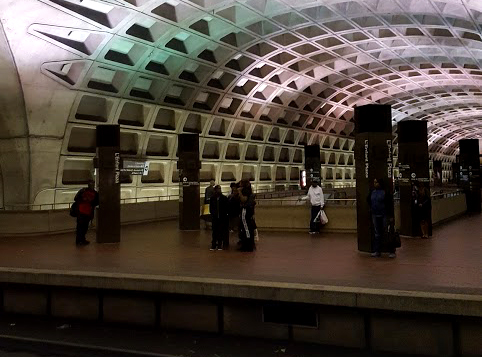SRPC’s Adventures in the Nation’s Capital

Earlier this month, I had the opportunity to work with planners from across the country to evaluate the merit of applications submitted for the next Federal Highway Administration (FHWA) SHRP2 program award round.  The work session in Washington, D.C. brought together planners and researchers from regional, state, and federal organizations. Participants shared transportation expertise and discussed their feedback on a diversity of proposed uses of the PlanWorks tool. PlanWorks, a product of the SHRP2 program, is “a decision support tool, built from the experiences of transportation partners and stakeholders, which provides how-to information when it is most needed†to inform transportation plans and projects.
This professional experience was supplemented by many inspiring city and transportation planning observations. Taking the Metro (D.C.’s rapid transit system) from the airport to the hotel, and then to the USDOT headquarters, made traveling from here to there a whole lot simpler, cheaper, more efficient, and less stressful! Walking from any of the Metro stations to my final destination was also a treat – literally – I had a chance to try some of the best ice cream I’ve ever had on my way back from the USDOT headquarters. When not talking ‘transportation’ with other planning practitioners and researchers, I had a chance to briefly explore the city’s historic, cultural, and natural attractions – thanks to D.C.’s superb sidewalks, crosswalks, transit, and many other critical infrastructure features that get transportation planners excited.
My experience of safe and efficient travel within our nation’s capital has led me to think about how people and goods move in and out of the Strafford region. A ‘one-size-fits-all’ approach for complete, safe, and accessible streets is not useful for all users. Here in New Hampshire, communities of various sizes and needs are learning about the diversity of approaches they can take to make their streets safe and accessible for all of their residents and visitors. If you are interested in learning more about what Complete Streets are and how SRPC is working with communities to find the best approaches for them, contact SRPC Regional Transportation Planner, Colin Lentz at clentz@strafford.org.
For questions regarding this post, contact SRPC Regional Planner, Natallia (Natasha) Leuchanka at nleuchanka@strafford.org.Â
